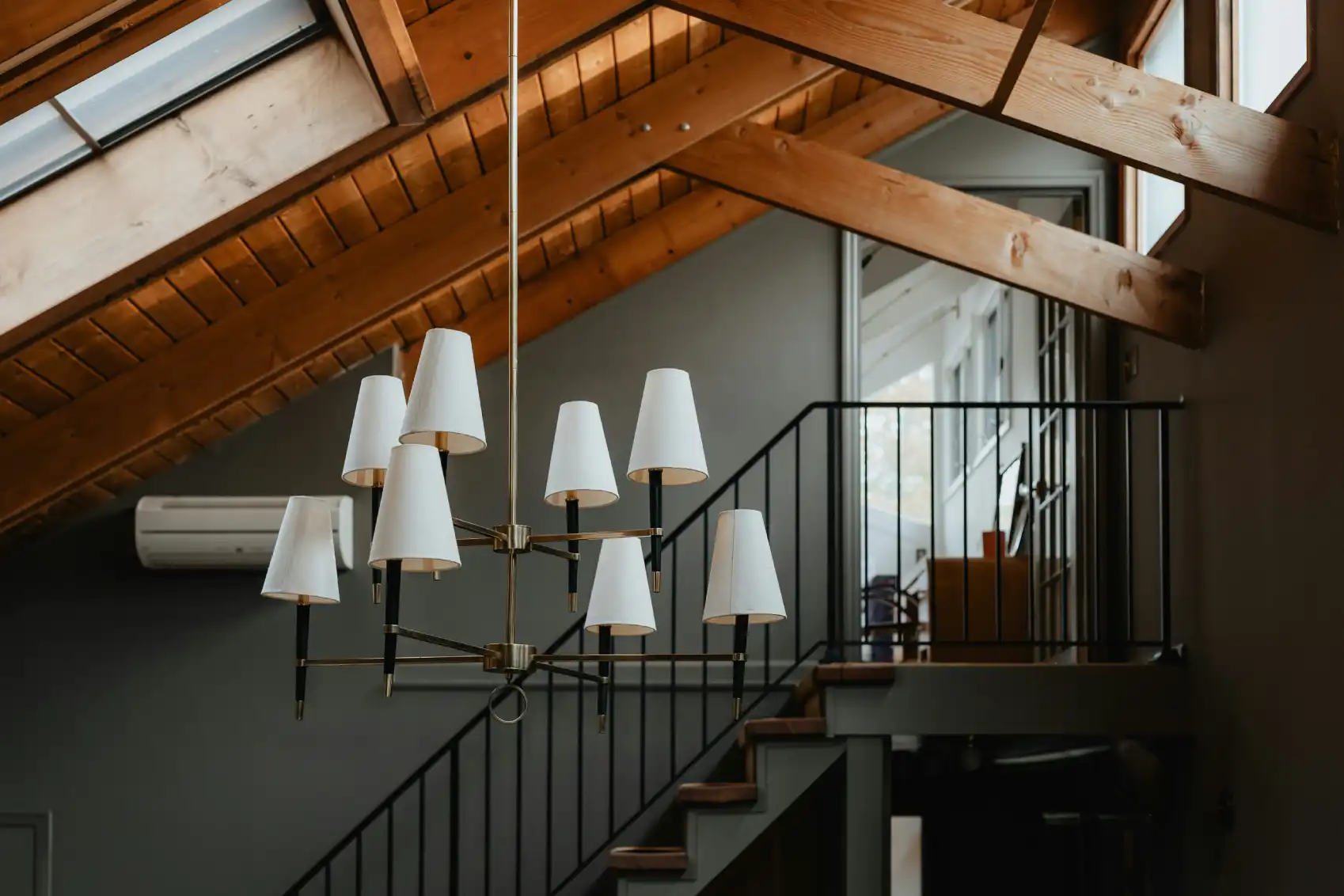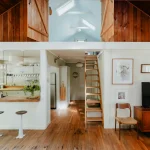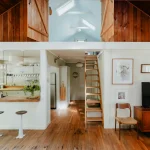
Velux Loft Conversion
A velux loft conversion installs windows along the existing roof slope which align with your roof, and they create a bright, open space. You don’t extend the roofline outward, so the basic shape of your home remains the same.
This design cuts down on structural modifications, which can mean lower costs compared to a dormer or a mansard loft conversion. People prefer this style of conversions when they want more headroom and natural light but prefer fewer external changes. Builders often refer to them as “rooflight conversions” because the windows let daylight stream directly into the new area.
But if you want a loft conversion Velux, there must be enough headroom to walk around comfortably. Also, you want a safe space to place a staircase. It’s always best to hire builders West London or local professionals who understand your roof’s structure. They’ll check if you need to strengthen the floor joists or add extra insulation. They’ll also confirm if you need planning permission.
Many Velux Loft Conversions can proceed under permitted development rights, which saves you time and hassle. The installation process typically involves cutting openings in the roof, fitting the windows, and ensuring there’s a watertight seal. The scale of work might be simpler than other styles of loft conversions, but it still needs professional oversight to guarantee safety and comfort.
When you look at your home from the outside after a Velux loft conversion, you see the same roof shape but with the new windows. On the inside, you get a brighter space where sunlight filters through.
How Much Does a Velux Loft Conversion Cost?

Time to talk about the important thing now: the velux loft conversion cost you’ll have to pay. Let us give you a low down on the different categories of velux loft conversion and their cost:
Basic Velux Loft Conversion
A basic velux loft conversion often starts around £20,000 for a small attic, covering essential construction work and standard roof windows. You won’t see fancy features at this level, but it’s enough to add a functional room to your home.
Builders will install new joists to strengthen the floor, fit your Velux windows, and ensure the space is watertight. You might get standard electrics, a simple staircase, and a standard finish on the walls.
Mid-Range Velux Loft Conversions
A mid-range velux loft conversion can cost between £30,000 and £40,000. This price range includes better-quality windows and more stylish interior finishes. You might add skylights with better noise reduction, or you may prefer windows that open in different ways.
Builders could install extra insulation in the roof, which keeps your new area warm in winter and cooler in summer. These choices raise costs, but the loft’s appearance and comfort level often feel worth it. If you choose underfloor heating or a customized storage solution, you’ll see the price go up slightly.
High-End Velux Loft Conversion
A high-end Velux loft conversion can reach £50,000 since it includes top-quality windows and bespoke designs. You might add an en-suite bathroom with modern fixtures. You could also request built-in wardrobes or a small kitchenette if the space allows. These features push the budget higher, but they create a luxurious area that feels like a natural part of your home. You could turn this new floor into a master suite or a comfortable study. Builders who manage large-scale projects in busy regions sometimes charge extra for labor and materials, especially if there are complex structural changes.
If you want an en-suite bathroom, you’ll pay extra for plumbing, tiling, and fixtures. You may need to connect pipes to your existing water and drainage system. If that system is on another side of the house, the plumbing work might cost more. You could also face more building regulations that apply to bathrooms on higher floors.
Notably, your house’s location also impacts the price you pay for a Velux loft conversion. For instance, if you live in or near a big city, you’ll pay more for materials and skilled workers. Some homeowners in areas known for loft conversions London face higher quotes than people in less crowded parts of the country.
Moreover, some homeowners consider a velux loft conversion instead of a dormer loft conversion because the cost is usually lower. A dormer adds an extension to the roof, which increases interior space but involves more structural work.
Change Your House For the Better

A Velux Loft Conversion can bring comfort, daylight, and real value to your home without a huge renovation. You stay in control of your budget by choosing essential features or adding extras like premium windows or a small bathroom. Every detail affects your final cost, so plan ahead, compare quotes, and work with reliable specialists. Clear communication avoids hidden expenses or time delays, and sticking to building regulations keeps everything safe and legal.
FAQs
How much does a Velux loft conversion cost?
It usually ranges from £20,000 to £50,000. A simple build with basic finishes might start near £20,000, while a larger or more luxurious project can exceed £50,000. The exact figure depends on the size of your loft, the quality of materials, the complexity of the design, and any extra features you choose.
Are Velux loft conversions worth it?
They can be a good choice if you have enough headroom and want a simpler design that brings in plenty of daylight. They’re often more cost-effective than conversions that require large structural changes, and they tend to blend in with your existing roof.
Do I need planning permission for a Velux loft conversion?
Most Velux loft conversions fall under permitted development, which means you don’t need formal planning permission if you keep the original roof shape and volume. However, you should always check with your local council or a qualified builder to confirm. Building regulations still apply, and you’ll need to meet standards for insulation, fire safety, and structural stability.
What is the 4 year rule for loft conversion?
The 4 year rule means that if you completed your loft conversion without the required permission but have used it continuously for four years, authorities might not be able to enforce it. However, relying on this rule can be risky. You should meet building regulations and planning requirements from the start to avoid legal or safety issues.




